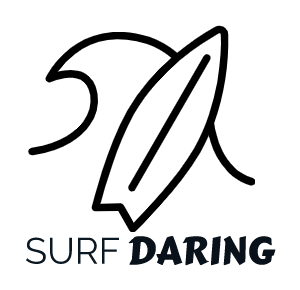Deciphering the Art of Surfing: Mastering How to Read Waves
In the exhilarating world of surfing, understanding how to read waves is akin to deciphering a complex language spoken by the ocean. Waves are not merely random occurrences but intricate expressions of nature, influenced by a myriad of factors ranging from wind patterns to underwater topography. Mastering the art of reading waves empowers surfers to anticipate, adapt, and ultimately conquer the ever-changing ocean environment. In this comprehensive guide, we’ll embark on a journey to unravel the secrets of wave reading, equipping you with the knowledge and skills to navigate the waves with confidence and finesse.
Wave Anatomy Demystified
The Face:
The face of the wave is the front, sloping part that surfers ride upon. It’s where the magic happens, where the thrill of surfing unfolds.
The Lip:
The lip refers to the top, breaking part of the wave. It’s the point where the wave transitions from smooth water to turbulent foam.
The Shoulder:
Adjacent to the breaking section, the shoulder of the wave offers a smooth, unbroken surface ideal for riding and maintaining momentum.
The Peak:
The highest point of the wave, where it begins to break and form the familiar crest of white foam. Identifying the peak is crucial for positioning and timing.
Understanding the Origins of Waves
The Role of Swell:
Swell refers to waves generated by distant storms or winds. Understanding swell direction, size, and period is essential for predicting wave behavior.
The Dance of Wave Sets:
Waves arrive in sets, groups of waves that follow a predictable pattern. Analyzing wave sets helps surfers anticipate lulls and peaks in wave activity.
Unraveling Wave Height:
Wave height, measured from trough to crest, influences wave power and surfing difficulty. Learning to gauge wave height prepares surfers for the challenges ahead.
Identifying Wave Breaks
Exploring Break Types:
From beach breaks to reef breaks and point breaks, each type offers unique surfing opportunities. Understanding break types is key to choosing the right spot.
Decoding Wave Patterns:
Observing changes in wave shape, size, and direction provides valuable insights into local wave dynamics. Surfing is as much about observation as it is about action.
Analyzing Wave Behavior
Harnessing Wave Energy:
High-energy waves are powerful and fast, while low-energy waves are gentler and more forgiving. Adapting to wave energy levels is essential for successful surfing.
Timing Wave Frequency:
Wave frequency, the time between wave sets, determines surfing conditions. Higher frequency equates to more consistent waves and better surf sessions.
Understanding Wave Refraction:
The bending of waves as they approach shallow water or obstacles, refraction can create better surf conditions in certain areas. Learning to read refraction patterns enhances wave selection.
Strategic Positioning Techniques
Finding Your Lineup:
Positioning yourself in the lineup, the area where surfers wait for waves, is critical for wave selection and catching.
Observing Incoming Sets:
Watching for incoming sets and anticipating their arrival is key to positioning yourself for the best waves. Patience and observation are virtues in surfing.
Perfecting Paddling Technique:
Efficient paddling not only helps surfers catch waves but also navigate through the lineup with ease. Angling your board toward the breaking part of the wave increases your chances of catching it at the peak.
Conclusion
Mastering the art of reading waves is a journey that unfolds over time, with each surf session offering new lessons and insights. By understanding wave anatomy, origins, breaks, behavior, and strategic positioning techniques, surfers can unlock the secrets of the ocean and elevate their surfing experience to new heights. Remember, surfing is not just about riding waves; it’s about forging a deep connection with the ocean and embracing the raw, untamed beauty of nature. So go forth, brave surfer, and may the waves be ever in your favor! Surfing Where Passion Meets the Waves.
